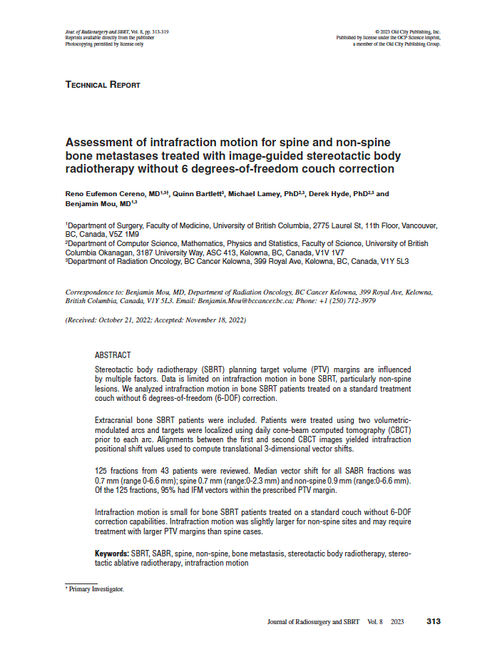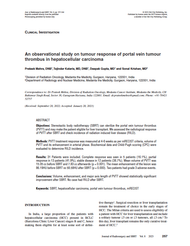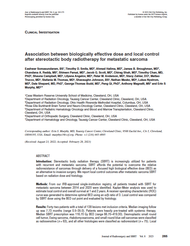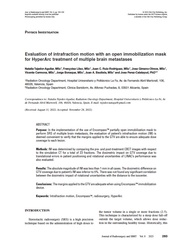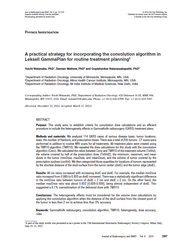- Home
- Journal Contents Downloads
- JRSBRT Downloads
- JRSBRT 8.4, p. 313-319
Product Description
Assessment of intrafraction motion for spine and non-spine bone metastases treated with image-guided stereotactic body radiotherapy without 6 degrees-of-freedom couch correction
Reno Eufemon Cereno, Quinn Bartlett, Michael Lamey, Derek Hyde and Benjamin Mou
Stereotactic body radiotherapy (SBRT) planning target volume (PTV) margins are influenced by multiple factors. Data is limited on intrafraction motion in bone SBRT, particularly non-spine lesions. We analyzed intrafraction motion in bone SBRT patients treated on a standard treatment couch without 6 degrees-of-freedom (6-DOF) correction.
Extracranial bone SBRT patients were included. Patients were treated using two volumetric-modulated arcs and targets were localized using daily cone-beam computed tomography (CBCT) prior to each arc. Alignments between the first and second CBCT images yielded intrafraction positional shift values used to compute translational 3-dimensional vector shifts. 125 fractions from 43 patients were reviewed. Median vector shift for all SABR fractions was 0.7 mm (range 0-6.6 mm); spine 0.7 mm (range:0-2.3 mm) and non-spine 0.9 mm (range:0-6.6 mm). Of the 125 fractions, 95% had IFM vectors within the prescribed PTV margin.
Intrafraction motion is small for bone SBRT patients treated on a standard couch without 6-DOF correction capabilities. Intrafraction motion was slightly larger for non-spine sites and may require treatment with larger PTV margins than spine cases.
Keywords: SBRT, SABR, spine, non-spine, bone metastasis, stereotactic body radiotherapy, stereotactic ablative radiotherapy, intrafraction motion
 Loading... Please wait...
Loading... Please wait...

